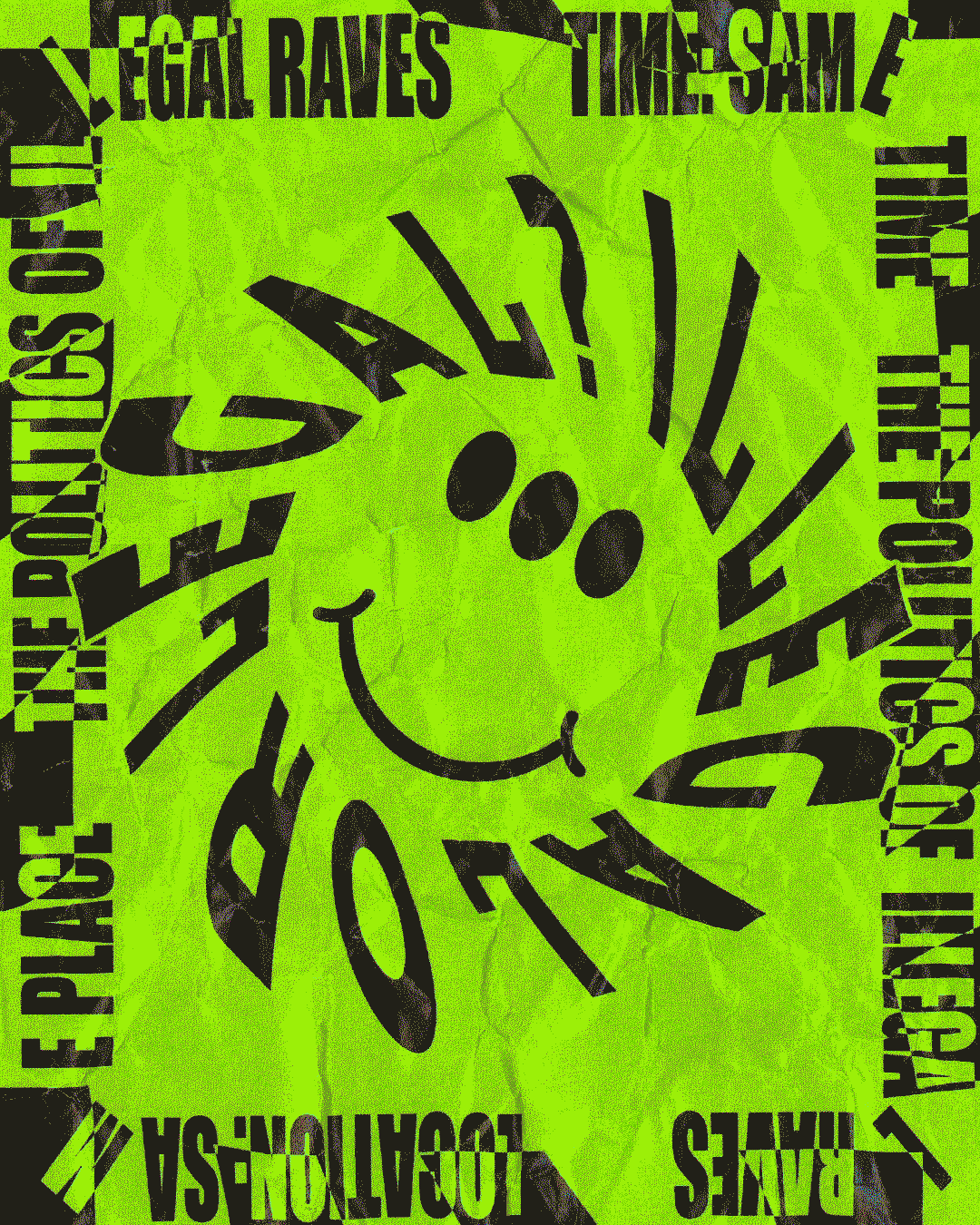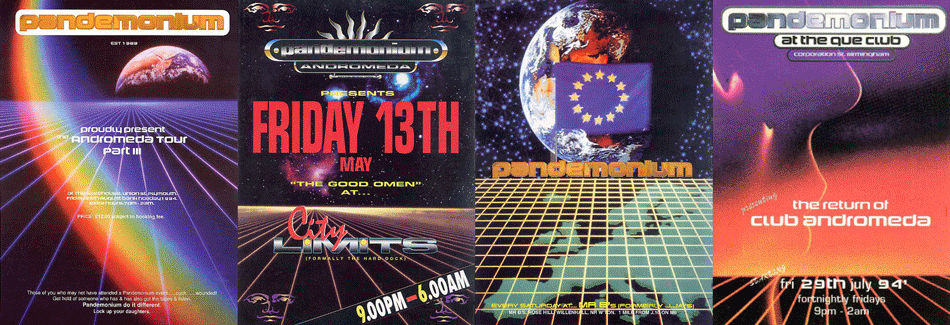Party politics: how the illegal rave is making a comeback

Illegal parties, Acid Corbynism and a police crackdown. 30 years after the Second Summer of Love are we in the midst of a rave renaissance?
Society
Words: Vicky Spratt
Saturday, 11.58pm
The pub I’m in is closing. I’m waiting for a friend to drop a pin, revealing a secret location in an invite-only WhatsApp group.
“It doesn’t get good until after midnight,” so I’m not worried about being late.
The pin drops, my Uber arrives, and the driver takes me as far as he can, ending the journey at the edge of a dark industrial estate in Tottenham, North London. This is where halogen-lit tarmac gives way to unlandscaped marsh land.
The group chat is alive, notifications light my way: “Bring loo roll”, “Bring cash”, “Don’t arrive all at once, you’ll alert the police’” The air is damp, but the downpour that seemed imminent at about 4pm has held off so the party will go ahead, under the cover of darkness, concealed in a thicket.
“What shoes are you wearing?” a friend of a friend asks the group, tongue-in-cheek. “Don’t forget your kitten heels.”
Say “illegal raves” to certain members of Gen X and they’ll start talking wistfully about the Second Summer of Love. How it began 30 years ago, between 1988 and 1989, fuelled by acid house, a heap of drugs and the unique combination of hope and resentment that comes when a country is on the cusp of change.
Biology, Clapham Common, July 1989
Few subcultures have been mythologised more than this. Books, like Exist to Resist and RAVE, have cast the illegal rave scene as a cultural rejection of the then Conservative government’s political and social ideologies. Commentators and academics alike have mused upon “the politics of dance music” or how club culture can be “an agent of change”.
And recently we’ve seen a renaissance in London’s illegal rave scene. In fact, official figures show that the number of planned unlicensed music events in London doubled between 2016 and 2017 alone. Two years on, we have secret WhatsApp and Facebook groups where detailed maps lead us to secluded archways in the more run-down parts of Zone 3; as well as private Instagram accounts (with only one detail-sketchy post) that disappear as soon as the party kicks off.
The rave scene of the late ’80s and early ’90s is often couched as a reaction to the Conservative Party’s long reign under Margaret Thatcher and John Major; a period of governance that stretched from 1979 until the victory of New Labour in 1997. It’s certainly true that things were tough in the early ’90s. There was recession, rising unemployment, inflation in double digits and interest rates as high as 15%. There were poll tax riots, a war in the Middle East. And, while the economy slowly started to look up, the benefits weren’t immediately, or ever, felt by all.

At the time, these parties – like the now legendary Castlemorton Common Festival in 1992 – could draw crowds as big as 20,000 people or more. They were so popular, in fact, that the tabloid newspapers perpetuated moral panic and perturbed politicians made it their mission to close them down. This culminated in the passing of the Criminal Justice and Public Order Act in 1994, which banned any large events featuring music “characterised by the emission of a succession of repetitive beats”. Of course, the noise made by four to the floor anthems didn’t go it away, it just went indoors. People started going “clubbing”.
“There’s a freedom you have at these parties to do drugs without seeing someone you know being shepherded out by security every 30 minutes.”
There are certainly parallels with the current political backdrop, where a succession of back-to-back Conservative governments have arrived, this time, with a Brexit bow on top. For the young people of today, the future has often felt bleak, with wildly unaffordable housing, stagnant wages and wanting to stay in the EU but being forced to leave, topped off with relentless headlines reminding us that we are worse off than the generations before us.
But, it would be lazy to call the surge in unlicensed parties in London right now a repeat of what went before. The political chaos we face today might be a similar hellscape but, over the last decade, a more practical explanation can be found in the fact that tougher licensing laws have seen clubs closing left, right and centre; the market shrinking by 25%, according to research company, IbisWorld. It’s only natural that people are taking partying into their own hands.
28-year-old Anna, who has attended illegal parties in Tottenham, Manor House and Woodford says that they’re a welcome break from “overpriced” London clubs. “The only club I would even consider going to now,” she says, “is Fold in Canning Town”. 30-year-old Tim, who most recently went to one “way out in West London…kind of around Acton and sort of near a flyover,” says he is drawn by the low cost too but adds there’s also something enticing about “the freedom you have at these parties to do drugs without seeing someone you know being shepherded out by security every 30 minutes.”

A selection of flyers from Pandemonium.
In the clubs that do remain, drinks are expensive, and curfews are tight. Last year Hackney Council announced unpopular and controversial restrictions which will mean that any new venues opening in the borough have to close at midnight. The effect is a London club scene that feels at best overpriced, and at worst non-existent.
Out on the marshes, though, things are getting exciting. I’m not standing in the purgatory of a freezing queue waiting to be searched from head to toe. The real world feels very far away and, for once, I doubt that I’ll suddenly be overcome with waves of anxiety at 3am in the middle of the dancefloor when I remember how much money I’ve spent on a, frankly, average experience.
The music leaves a lot to be desired, as does the mixing, but I don’t care. Anna and Tim both agree that the music at the parties they’ve been to was average at best – “dodgy house”, “unrecognisable euphoric tunes” or “rubbish knock off Adam Beyer techno” – but they say they keep going back because of the “festival-like atmosphere” and “sense that anything can happen”. In a city that has become increasingly unaffordable (for most), at a time when rents have gone up 60 per cent faster than wages in less than a decade, this night out feels rare and, frankly, soothing.
Tim agrees. “Look,” he says, “life is hard. Will I ever buy a house? I don’t know. Our generation has been shafted. Big clubs in London have done to nightlife what Amazon has done to the high street. Tickets are expensive and clubs care about returns so they book big names and don’t care who they get through the door. They put on these ‘all day parties’ but who can afford to buy drinks all day?”
“Academics often link disenfranchisement to dancing…but is partying ever really a protest?”
There are several different collectives (a.k.a. groups of mates) behind the unlicensed parties in London. I spoke to people from three of them. None wanted to be identified by their real names but all were eager to promote the scene despite its illegality. They don’t all get on or rate one another. A member of one collective tells me that they think it’s unethical that another charges entry. “We put our own money into these events,” he tells me. “We don’t want costs to be a barrier for entry.”
“We actually don’t like to refer to these events as parties,” he adds. “It’s more about bringing people together, giving them a unique experience”.
Steve DJs at these parties and he also puts them on. He’s less squeamish about money but just as clear that he is reacting to how corporate nightlife in London has become, drawing directly on the ‘community’ mantra that many associate with rave. “It might sound clichéd but it’s the community feeling,” he tells me. “It’s so different to playing somewhere like XOYO [the Shoreditch club at which he regularly performs]. People are much more open-minded and enthusiastic. They are there because they just love being part of it.”
“When I play in Berlin,” he continues, “it takes a good half hour to win an audience’s trust – they assume you’re crap until you prove them wrong. Here I feel like we’re all in it together.” So, he wouldn’t compare it to Berlin? “It’s a bit like Sisyphos, where I always play, but no, it’s in a league of its own.”
What separates these parties from Berlin’s party scene, or the legendary raves of the ’80s and ’90s, though, is that they are not epic, flyered events drawing people in their thousands. Nor are they played by the best DJs in town. They’re low-key and low-res. As Laura, a friend who I’ve gone to illegal parties with over the years, explains: “People don’t really care about what they’re listening to. It’s a guilt-free night out. One you’re not going to worry about on Tuesday morning when you check your bank account in the morning.”
I leave before the sun comes up. Making my way back across the marshes what strikes me is that, far from feeling knackered, I actually feel refreshed. I’d forgotten what it feels like to go out and be cut off from reality for a bit.
Academics often link disenfranchisement to dancing, last year’s attempts to make Acid Corbynism a thing were just the latest reincarnation of that. But, is partying ever really a protest? In the sense that these organisers and attendees are determined to reclaim their right to go out, get off their faces and forget about real life for a bit without spending a small fortune, yeah, I guess so. But are these raves likely to change the law? Are people likely to eulogise them in books and academic texts? Probably not. Still, it’s a fun night out.
Names in this article have been changed to protect identities.
Playlist: acid house and a little bit more
2. A Guy Called Gerald – Arcade Fantasy
3. Marcus Mixx – Without Makeup (Ron Hardy Mix)
5. Fingers Inc. – Distant Planet
6. Fingers Inc – Washing Machine
7. Jam & Spoon – My First Fantastic F.F.
8. Master C & J – Face It (Dub)
11. Jungle Wonz – Bird In A Gilded Cage
12. Ron Hardy – Sensation
14. Da Posse ft. Christa Jordan – In The Heat Of The Night
15. Ron Trent – Altered States
16. Willesden Dodgers – 112 B.P.M.
18. Ben Harris – H2O

